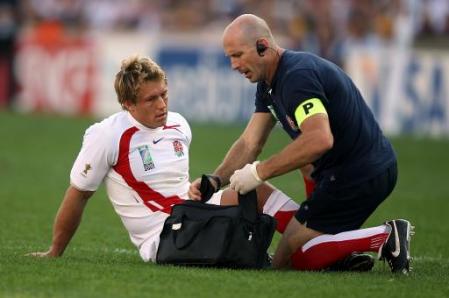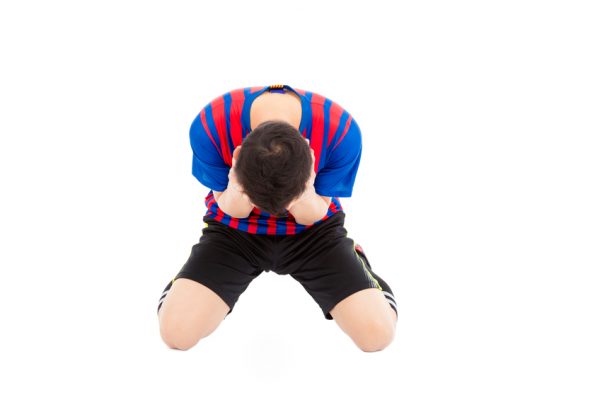
There has been a drastic increase in the instance of sports injury. This increase is partially due to an increase in participation, but there is also an increase in the proportion of athletes that are getting injured.1 As a result, there has been a lot of research about the physical and psychological factors that influence an athlete’s successful return to sport. The return to sports model suggests that an athlete’s ability to pass successfully from one stage to the next in their return to competition is contingent upon physical elements, such as the injury healing and physical conditioning, as well as psychological rehabilitation.
What does mental recovery look like for an injured athlete? The research suggests that are several critical psychological factors that are affected during recovery. First and foremost, injury is usually a very stressful emotional experience and it is common for athletes to experience feelings of deep sadness, anxiety, confusion, tension, hostility, tiredness, and, sometimes, persisting sadness that reach levels of clinical depression.2 The notion that depression is fairly prevalent in athletes post-injury is supported by many studies, which generally show that approximately 10% to 20% of injured athletes experience extreme responses to injury, particularly depression, at intensities that surpass levels usually recommended for clinical referral.3
Second, an athlete’s identity is at risk after an injury. Imagine that a person who is used to identifying as an ‘athlete’ and participating in sports/exercise on a daily basis is suddenly labeled ‘injured’ and unable to exercise for weeks or months. Disturbances to identity can also affect an athlete’s feelings of self-worth. Self-worth is usually attained through three basic needs: (1) the need to feel competent, (2) the need to experience achievements, and (3) the need to feel accepted.4 An injury prevents athletes from feeling confident, experiencing success in sports, and feeling connected and accepted by their teams.
Finally, it is common that an athlete experiences fear of re-injury; 13% think about it during rehabilitation, and 40% upon return to sport. Fear of re-injury can present itself in flashbacks to the occasion on which the injury occurred or when an athlete believes that re-injury is likely to happen upon returning to the sport. Alternatively, this fear can manifest itself in feelings of anxiety surrounding the sports experience. Fear of re-injury is often a reason why many athletes never return to their sport.5
It is important to note that although several factors play into the psychological recovery experience, an athlete’s cognitive appraisal (or interpretation) of the injury and rehabilitation experience have a huge impact on the emotional and behavioral response to the injury and recovery. Psychological intervention, like counseling, can decrease the distress throughout recovery as well as facilitate a healthy and fruitful return to sport.
By Laura Kirschner M.Ed.
Dr. Rob Udewitz has been working with New York Road Runners’ Team for Kids program for the last ten years, providing performance consulting for the athletes involved. Team for Kids is made up of a group of adult runners from around the world who raise funds for NYRR’s Youth and Community Services programs while training for endurance events. The funding provides support for kids such as free or low-cost health and fitness programs to kids who would not usually have access to them.
For many of the amateur athletes, it is not just about giving back to the community, but also about maximizing their performance. Rob’s personal experience with running (he ran his first NYC marathon at the age of 17) let him bring his professional and personal insights about running a marathon. Rob works with the athletes to help them understand their discomforts and pain thresholds, and how much can you negotiate with that discomfort to perform your best.
In his lectures, Rob helps runner become more aware of their fears as well as share those concerns with others. Some common themes that come up are focusing on the result of finishing the race, pacing, breathing, and maintaining energy. Rob emphasizes the importance of an emphasis on the process. He explains how important it is to cultivate a “beginner’s mind” where you have the spirit of excitement and adventure. He says this ‘let’s see’ attitude helps us balance the critical mind with the learning mind, and cultivate peak performance.
Find one of Rob’s talks with New York Road Runners’ Team for Kids here.
By Laura Kirschner M.Ed.

From one week to the next and from one game to the next, sports clubs (the professional teams, parents and players) live on an emotional roller-coaster. After a win – self-confidence rises and everyone feels great until the next game. After a loss – self-confidence decreases and is joined by a feeling of disappointment that is gradually replaced by an expectation to win the next game. Itzhak Zur, Sports Psychologist, discusses the ways to improve and maintain high self-confidence even in teams that do not experience wins every week.
We won 🙂 This is awesome! We were great! – We lost 🙁 Bummer, we weren’t good enough again…
Everybody loves to win. Winning is fun. Wins are accompanied by various feelings of elation, euphoria, solidarity, unity, high self-esteem and optimism. Research shows that even testosterone levels in the body rise after a victory – which positively affects the players’ physical abilities.
And yet, as we know, most teams do not experience winning consistently. Moreover, a team that is positioned somewhere in the middle of the chart (not a bad place to be at all) will lose on average half of all matches every season. Should players in teams from the middle of the chart and below feel second-best for more than half the season? The answer is not necessarily, and necessarily not!
The way to avoid a decrease in the self-confidence and self-esteem of players is by setting different kinds of goals. One goal of course is winning the next game – this is something we strive for regardless. Only it is important to remember that this is not a goal that depends solely on us, but also on the team we are up against, so we do not have complete control over it. The second kind of goals are those that relate to our personal process of improvement, which we do have complete control over and does not depend on others – whether on a personal or on a team level.
On a team level, the goal of the team for the upcoming game might be, for example: “play more aggressively”, or, “apply a particular game method we have been practicing this week.” On a personal level, each player will set themselves a specific goal that relates to their own improvement, for example: “perform 6 sprints on the line instead of 4”, or, “go into defense quicker.”
Setting personal and team goals that focus on improving abilities that we have complete control over, gives the players a sense of accomplishment and progress. A player who has met their own goals will go home after the game feeling accomplished and with an increased self-confidence, even if they had lost. Fulfilling one personal goal creates a safety net for the disappointment that accompanies defeat.
A team who has set the goal of improving their defense, and indeed displayed better defense abilities in the game, will come out feeling accomplished and successful even if they had lost.
It is interesting to note that research consistently shows that teams and players who focus on goals that relate to the improvement process itself (which they have complete control over), also bring themselves to more victories and success in the future. This is mainly due to the fact that a sense of high self-confidence and capability are extremely important.
By Itzik Zur, Ph.D.



